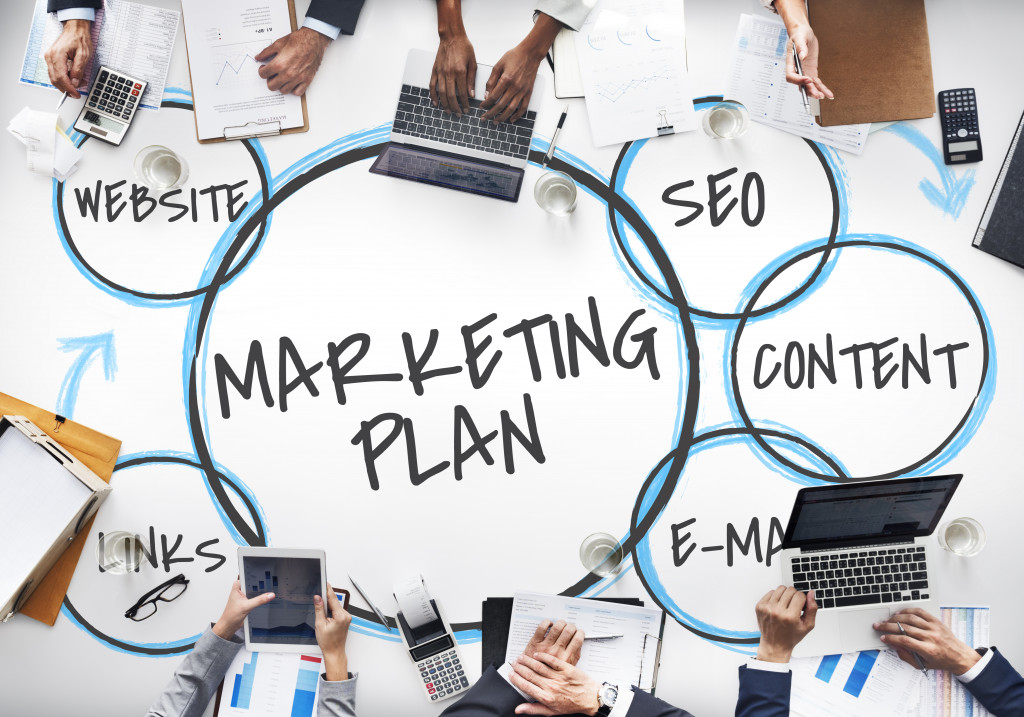Some old adages still hold true today, such as the advice that one must not redesign the wheel. This applies to digital marketing, as well. It has developed exponentially through the pandemic when more than half of the world or 4.66 billion out of a 7.83 billion global population now live on the Internet for an average of six hours and 54 minutes every day. This was in the data culled by the Digital 2021 Global Overview Report of WeAreSocial and Hootsuite.
The foundations of marketing digitally to these online consumers are still basically the same. Businesses must realize that they need to build the classic foundations of digital marketing and then enhance these with the many new developments that have come up since.
Many businesses do realize this now, as seen in the continued rise of global digital advertising spending. Data from Statista show that businesses worldwide spent $370.26 billion on digital advertising in 2019 and increased this to $399.27 billion in 2020. Statista predicts that this will go up to $458.16 billion by the end of this year. Spending on search comprised the largest share of the pie consistently. Banner advertisements ranked second, and video advertisements ranked third.
Experts predict that by 2025, though, the spending on video advertising will outrank that on banner ads. Classified advertising consistently has the thinnest slice of the pie. The billions spent on digital marketing shows that any business must now compete on the same footing or gets left behind.
Classics Are Always Relevant
The most basic foundation of digital marketing is the business website. Today, a business that does not have a website is akin to a store hidden miles away from the nearest population. No one can find it unless someone happens to pass by on his or her way to the shop he or she really intends to visit.
A business must have a highly searchable website online. The Digital 2021 Global Overview Report shows that 98 percent of Internet users still use traditional search engines when looking for purchase information, but they are also using other methods, as well. About 45.3 percent also use voice search, 44.8 percent also use social media, and 32.9 percent also use image search.
When they do visit a website, though, 42.7 percent use ad blockers and most of those get annoyed by too many ads that take up too much screen space and which they find to be intrusive and annoying. A few expressed concerns that ads contain viruses, a few were wary of ads compromising their personal data, and a few did not want ads to use up their data allowance.

Apart from disliking ads, website users want a smooth and seamless experience. They want the website pages to load fast and stay stable, with almost instantaneous interactivity. These align with the Core Web Vitals that Google now uses as a standard for ranking websites.
It is more cost-effective for a business to hire a website development and maintenance company that also does search engine optimization (SEO) and pay-per-click (PPC) campaigns. Having a single team providing both SEO and PPC services ensures that campaigns are always aligned and focused, bringing in the highest return-on-investment (ROI). This is also better than hiring an in-house IT team to do these tasks because the business can save on investing on costly hardware and software that often need upgrades.
Stay On-Trend
With the classic foundation down pat, a business must not neglect the newest developments in digital marketing. Artificial intelligence (AI) is now a byword in the industry, applied to the website and all social media assets of the business, as well as other platforms.
Social media is where many people congregate when they are online. A business must have a presence on all the social media sites favored by its target market. There is no need to spend resources on off-target platforms. Other possible platforms that the target audience may hang out in are games and live digital events on streaming sites.
Using AI, the digital marketing team can track the online behavior of consumers on the business website, social media assets, and other platforms. AI can use this data to customize the campaign for each individual consumer. For instance, when the consumer visits the website, the items shown are those based on her preferences. When she goes on social media, she is discreetly shown ads based on her wants.
AI can also customize discount campaigns, adjusting the percentage of discounts based on a consumer’s previous purchase behavior. Discounts can be higher for loyal customers while new customers can have a lower discount. This will entice them to purchase more, knowing that they can have bigger discounts as their purchases grow.
Integrating the tried-and-tested methods with cutting-edge developments is the key for businesses to stay at the forefront of the current business world. Even companies operating in physical stores cannot afford to neglect to have a strong digital presence.



